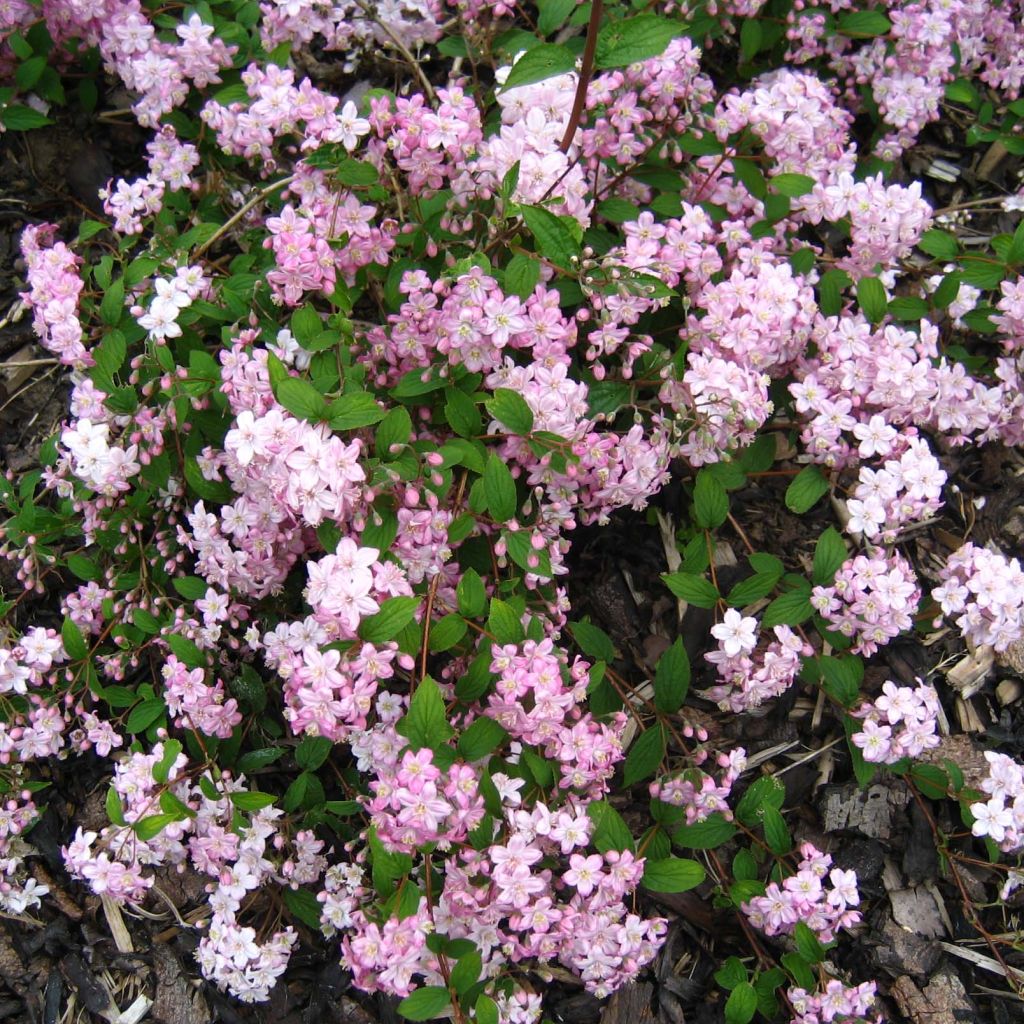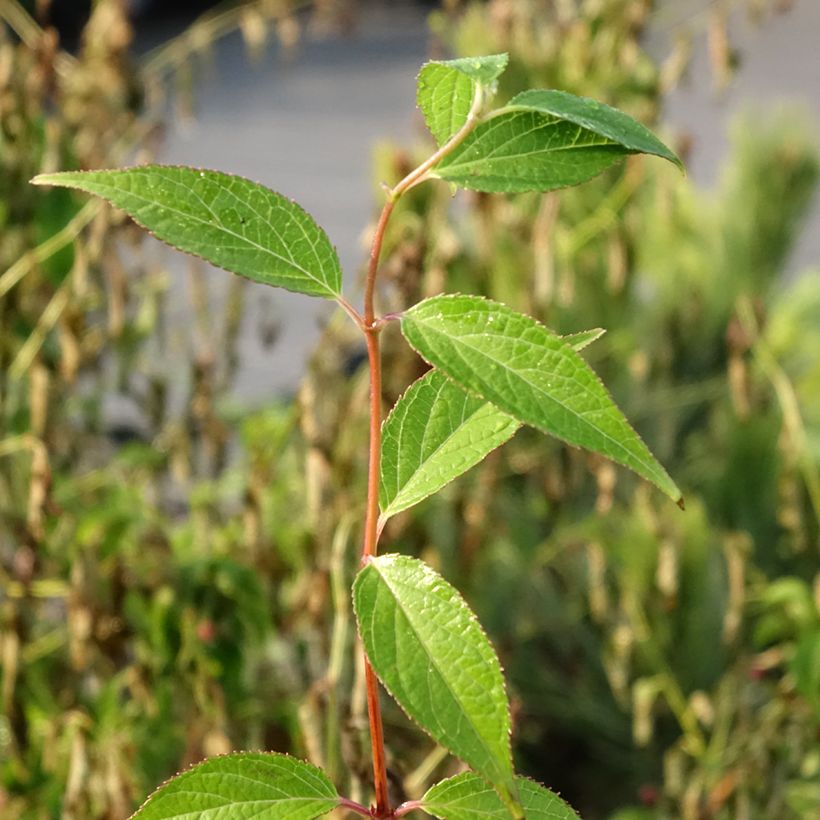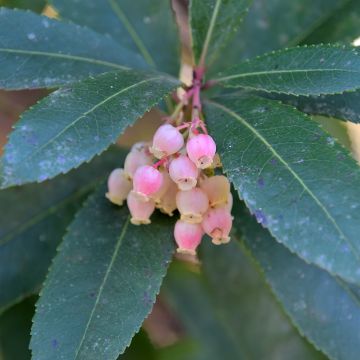

Deutzia elegantissima Rosealind


Deutzia elegantissima Rosealind


Deutzia elegantissima Rosealind
Deutzia elegantissima Rosealind
Deutzia x elegantissima Rosealind
Japanese Snow Flower
The plant arrived in good condition despite the vagaries of the postal service, delivered outside the scheduled timeframe. I was away for two weeks, so it was returned to sender and then re-sent 15 days later. Thank you for your availability.
Hervé, 04/11/2025
Special offer!
Receive a €20 voucher for any order over €90 (excluding delivery costs, credit notes, and plastic-free options)!
1- Add your favorite plants to your cart.
2- Once you have reached €90, confirm your order (you can even choose the delivery date!).
3- As soon as your order is shipped, you will receive an email containing your voucher code, valid for 3 months (90 days).
Your voucher is unique and can only be used once, for any order with a minimum value of €20, excluding delivery costs.
Can be combined with other current offers, non-divisible and non-refundable.
Home or relay delivery (depending on size and destination)
Schedule delivery date,
and select date in basket
This plant carries a 24 months recovery warranty
More information
We guarantee the quality of our plants for a full growing cycle, and will replace at our expense any plant that fails to recover under normal climatic and planting conditions.
Would this plant suit my garden?
Set up your Plantfit profile →
Description
The Deutzia x elegantissima Rosealind is one of the first to bloom in the garden, in a haze of small flowers ranging from faded magenta to pink-lilac-mauve. Its porcelain-like flowers, grouped in airy panicles, are so numerous for 4 weeks that they make this bush, despite its modest stature, spectacular in full bloom. This deutzia is essential in a flower garden, especially since it grows well in any good, not too dry garden soil. Whether in a flowering hedge, alone, in a country-style bed, or even in a large pot on the terrace, it is difficult not to succumb to the charm of this delicately beautiful bush!
The hybrid Deutzia 'Rosealind' is an Irish creation dating back to the 1950s. It is a selection of the Deutzia x elegantissima, a hybrid created by Lorraine nurseryman Victor Lemoine in 1901, by crossing the Deutzia purpurascens and the D. sieboldiana. Both species, belonging to the saxifrage family, are native to China. 'Rosealind' is a bushy shrub, taking on a more upright habit if left unpruned. It reaches a maximum height of 1.50m (4 ft 11 in) and a spread of 1m (3 ft 4 in), with a rather fast growth rate. The abundant flowering often starts in May and lasts for a good part of June, almost obscuring the foliage. Its star-shaped flowers, grouped in panicles, are remarkable: dark magenta pink in bud, they open into stars of a fairly intense mauve-pink-lilac, lighter in the centre. They are often fragrant and attract pollinating insects. The flexible branches, brown-purple in colour, bear deciduous foliage composed of long, medium green leaves with a matte finish, heavily veined. Deutzia will reach its peak flowering in a soil that is both limestone-rich, rich in humus, and not too dry.
Deutzia, an almost indestructible shrub, has been out of fashion in recent years, but it brings a lot of satisfaction to the gardener with little effort. Among other deutzia varieties, Deutzia Rosealind stands out in the garden and accompanies the first summer blooms. It can be used in a free hedge or mixed with other flowering shrubs like Kolkwitzia, Abelia, mock oranges, laburnums, or brooms. Its moderate growth allows it to be integrated into small gardens and even welcomed in a large pot on the terrace or balcony.
Report an error about the product description
Deutzia elegantissima Rosealind in pictures




Plant habit
Flowering
Foliage
Botanical data
Deutzia
x elegantissima
Rosealind
Hydrangeaceae
Japanese Snow Flower
Cultivar or hybrid
Planting and care
The Deutzia 'Rosealind' is a low-maintenance plant that can grow well in ordinary, well-drained soil, even limestone and occasionally dry. However, it will produce more flowers if planted in humus-rich, well-drained soil and placed in a sunny location. It does not grow well in compacted soils and saturated conditions in winter. The plant can withstand freezing temperatures of up to -20°C (-4 °F). While pruning is unnecessary, it is well-tolerated in June, just after flowering. Pruning later will remove the flowers for the following year, as they produce blooms on one-year-old and older branches.
Planting period
Intended location
Care
-
, onOrder confirmed
Reply from on Promesse de fleurs
Similar products
Haven't found what you were looking for?
Hardiness is the lowest winter temperature a plant can endure without suffering serious damage or even dying. However, hardiness is affected by location (a sheltered area, such as a patio), protection (winter cover) and soil type (hardiness is improved by well-drained soil).

Photo Sharing Terms & Conditions
In order to encourage gardeners to interact and share their experiences, Promesse de fleurs offers various media enabling content to be uploaded onto its Site - in particular via the ‘Photo sharing’ module.
The User agrees to refrain from:
- Posting any content that is illegal, prejudicial, insulting, racist, inciteful to hatred, revisionist, contrary to public decency, that infringes on privacy or on the privacy rights of third parties, in particular the publicity rights of persons and goods, intellectual property rights, or the right to privacy.
- Submitting content on behalf of a third party;
- Impersonate the identity of a third party and/or publish any personal information about a third party;
In general, the User undertakes to refrain from any unethical behaviour.
All Content (in particular text, comments, files, images, photos, videos, creative works, etc.), which may be subject to property or intellectual property rights, image or other private rights, shall remain the property of the User, subject to the limited rights granted by the terms of the licence granted by Promesse de fleurs as stated below. Users are at liberty to publish or not to publish such Content on the Site, notably via the ‘Photo Sharing’ facility, and accept that this Content shall be made public and freely accessible, notably on the Internet.
Users further acknowledge, undertake to have ,and guarantee that they hold all necessary rights and permissions to publish such material on the Site, in particular with regard to the legislation in force pertaining to any privacy, property, intellectual property, image, or contractual rights, or rights of any other nature. By publishing such Content on the Site, Users acknowledge accepting full liability as publishers of the Content within the meaning of the law, and grant Promesse de fleurs, free of charge, an inclusive, worldwide licence for the said Content for the entire duration of its publication, including all reproduction, representation, up/downloading, displaying, performing, transmission, and storage rights.
Users also grant permission for their name to be linked to the Content and accept that this link may not always be made available.
By engaging in posting material, Users consent to their Content becoming automatically accessible on the Internet, in particular on other sites and/or blogs and/or web pages of the Promesse de fleurs site, including in particular social pages and the Promesse de fleurs catalogue.
Users may secure the removal of entrusted content free of charge by issuing a simple request via our contact form.
The flowering period indicated on our website applies to countries and regions located in USDA zone 8 (France, the United Kingdom, Ireland, the Netherlands, etc.)
It will vary according to where you live:
- In zones 9 to 10 (Italy, Spain, Greece, etc.), flowering will occur about 2 to 4 weeks earlier.
- In zones 6 to 7 (Germany, Poland, Slovenia, and lower mountainous regions), flowering will be delayed by 2 to 3 weeks.
- In zone 5 (Central Europe, Scandinavia), blooming will be delayed by 3 to 5 weeks.
In temperate climates, pruning of spring-flowering shrubs (forsythia, spireas, etc.) should be done just after flowering.
Pruning of summer-flowering shrubs (Indian Lilac, Perovskia, etc.) can be done in winter or spring.
In cold regions as well as with frost-sensitive plants, avoid pruning too early when severe frosts may still occur.
The planting period indicated on our website applies to countries and regions located in USDA zone 8 (France, United Kingdom, Ireland, Netherlands).
It will vary according to where you live:
- In Mediterranean zones (Marseille, Madrid, Milan, etc.), autumn and winter are the best planting periods.
- In continental zones (Strasbourg, Munich, Vienna, etc.), delay planting by 2 to 3 weeks in spring and bring it forward by 2 to 4 weeks in autumn.
- In mountainous regions (the Alps, Pyrenees, Carpathians, etc.), it is best to plant in late spring (May-June) or late summer (August-September).
The harvesting period indicated on our website applies to countries and regions in USDA zone 8 (France, England, Ireland, the Netherlands).
In colder areas (Scandinavia, Poland, Austria...) fruit and vegetable harvests are likely to be delayed by 3-4 weeks.
In warmer areas (Italy, Spain, Greece, etc.), harvesting will probably take place earlier, depending on weather conditions.
The sowing periods indicated on our website apply to countries and regions within USDA Zone 8 (France, UK, Ireland, Netherlands).
In colder areas (Scandinavia, Poland, Austria...), delay any outdoor sowing by 3-4 weeks, or sow under glass.
In warmer climes (Italy, Spain, Greece, etc.), bring outdoor sowing forward by a few weeks.








































